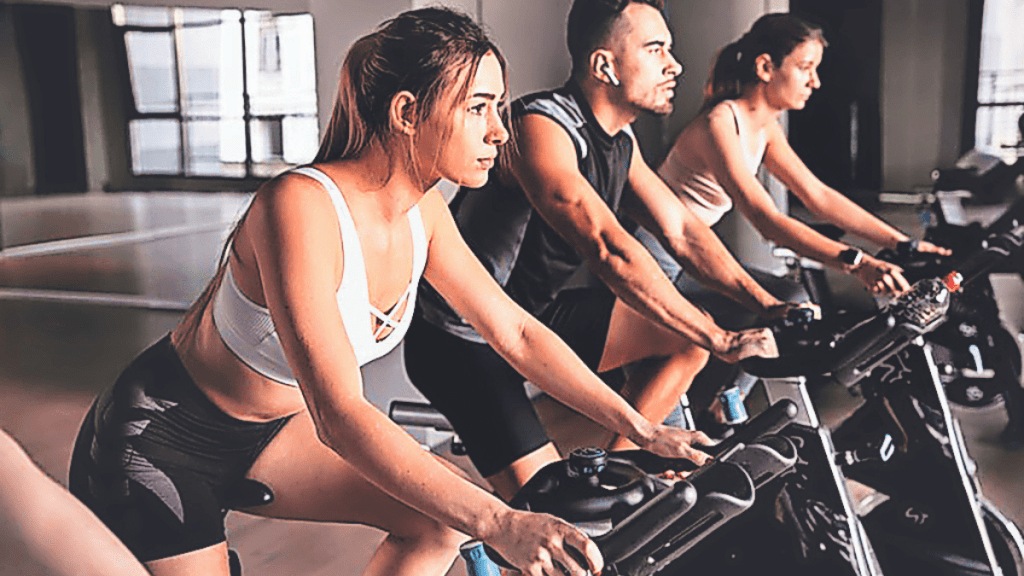Rising temperatures have never deterred Arpita Singh from pursuing her passion for fitness. Even though it is close to 50 degrees Celsius (and counting) outside her Gurugram duplex, she tries to live an active lifestyle by making do with the resources available in the comfort of her living room.
Her morning rituals start with a 60-minute yoga session for mindfulness and to get instant relief from work-related stress. For mobility and body flexibility, Singh has created an activity space in her house. “My 4-piece exercise set helps improve flexibility, the knee cushions reduce pressure on knees, hands or elbows, and the massage ball, when rolled over, helps in sore points. This exercise set helps me follow my regular routine indoors even if the weather doesn’t permit me to go out. The home training is versatile to support movement,” says the 35-year-old fitness enthusiast.
Like Singh, many people in metropolitan cities and other urban centres are trying to remain physically fit by using such ‘mini gyms’ and other indoor workout facilities. As the country reels under extreme weather conditions and record-breaking temperatures and heat waves, several others are also making use of exercise options like dance, yoga or aerobics to stay active.
The good news is that you can also avail of fitness studios and their workout sessions. For instance, Mumbai-based Revolve Studio has a unique approach to indoor workouts, be it spinning, zumba, barre and mat pilates or strength and aerial yoga and free hand boxing. The facility also offers high-octane spin classes, dance, meditation and sound bath healing sessions led by seasoned instructors. The studio is pet-friendly, encouraging furry friends to join the fitness fun, to boot. Similarly, Gold’s Gym, a popular chain of fitness centres and gyms, has nutrition guidance as well as group fitness classes.
When to start?
It is important to know the level of fitness that the body needs. Kushal Pal Singh, fitness and performance expert, Anytime Fitness, a pan-India gym chain, says, one must know the fitness intensity.
“Listen to your body and adjust your workout intensity, especially during extreme heat. Pushing yourself too hard by doing extreme levels of difficult exercises can lead to heat-related illness, which can damage your muscles and other organs,” he says.
For Singh, hydration is key while exercising during extreme temperatures. “One must ensure to drink at least 2-3 glasses of water an hour before working out. Always carry a water bottle to sip small amounts of water in between workout sessions. Post-workout intake of water is extremely crucial as it will help restore the lost electrolytes and replenish the body,” he says.
When we exercise, our body temperature rises, leading to sweating. “It is therefore advised to always exercise in cool and pleasant surroundings. If you are exercising in gyms or workout centres, make sure the temperature of the AC is within 25 degrees Celsius to ensure a cool and pleasant workout session. If you are exercising outdoors, the best time to exercise is during early morning hours or during evening or late night time,” adds Singh.
Dr Rajeev Rajesh, chief yoga officer, Jindal Naturecure Institute, recommends strength training that can yield significant benefits for muscle development and skill enhancement.
“Try indoor swimming for a refreshing and full-body workout as it is a cooling activity and a low-impact exercise suitable for individuals of all ages. Indoor sports also provide a comfortable and climate-controlled environment for physical activity, with options including badminton, tennis and basketball, as well as yoga and pilates. And performing yoga benefits in relaxing the body and keeping it flexible,” he explains.
You can also make the most of your workday to stay active. Just because you have a desk in office doesn’t mean you have to sit at it for hours at a stretch. Take little opportunities to stand up or move more throughout your day. When you take a break, you can move to a different room or floor, and stretch instead of sitting at a place, and so on.
Keep a watch
Singh of Anytime Fitness, however, advises to look out for warning signs when exercising. “If you feel any of the symptoms such as faintness, nausea, dizziness, rapid heartbeat, muscle cramps, headaches or vomiting, stop immediately, sit down, drink plenty of fluids and keep your body on rest for some time.
Exercising during summer time comes with the added exposure to extreme heat conditions which can affect the body resulting in heat related issues. By staying hydrated, dressing appropriately, managing body temperatures can help ensure a healthy and enjoyable workout session,” he says.
It is essential to consider a balanced approach to indoor exercises to maintain physical fitness while avoiding heat-related issues. “Timing-wise, early mornings or late evenings are optimal for workouts, while indoor exercises can be done at any time of the day. When opting for indoor activities, individuals can engage in yoga, pilates, or body weight exercises in well-ventilated spaces with air conditioning to prevent overheating,” says Dr Parmila Sharma, HoD, physiotherapy and rehabilitation, Paras Health, Gurugram.
There is no one exercise that can serve the best results. But dance routines like aerobics and zumba under supervision of certified trainers are advisable. Sharma feels clothes are also an important factor when starting indoor workout sessions. “Wear light-coloured and breathable fabrics. Polyester-based active-wear materials are better when exercising in an air-conditioned environment, and cotton blends can be good for outdoors. Wear sunscreen.
Try to aim for at least 150 minutes of moderate-intensity exercise per week spread across several days, with 3-5 sessions per week. Incorporate cardiovascular activities like running or swimming, strength training with body weight exercises or weights, and flexibility exercises such as stretching or yoga,” adds Sharma.
SUMMER YOGA
Surya Namaskar improves blood circulation, stretches muscles, and enhances overall vitality.
Trikonasana is good for the function of lungs and stimulates the kidneys.
Shavasana allows the body to cool down and helps in mental clarity.
Sitali Pranayama cools body, adds moisture to the system and soothes a pitta imbalance.
Trikonasana is good for the function of lungs and stimulates the kidneys.
Bhujangasana improves circulation and stimulates digestive organs, promoting a sense of vitality and balance.
— Dr Rajeev Rajesh, chief yoga officer, Jindal Naturecure Institute
QUICK CHECKLIST
Avoid workout between 10 am and 3 pm; opt for early mornings or late evenings.
Wear loose-fitting attire to facilitate air circulation.
Avoid overexertion to the point of dizziness or nausea.
Check weather forecasts for indications of high ozone levels or air pollution if opting for indoor workouts.
Have water-rich foods such as strawberries, cucumber and watermelon to enhance hydration levels.
SMART EXERCISES
Barre combines ballet, pilates, and yoga with a focus on low-impact, high-intensity movements. It helps in toning the muscles, improving posture.
Aerial yoga lets you do yoga poses suspended in the air with silk hammocks. It increases flexibility, strengthens muscles and reduces stress.
Sound bath healing yoga involves sound therapy of crystal bowls and other instruments. It helps in reducing stress
Spinning is a high-energy, cardiovascular workout with instructors and upbeat music.
It improves cardiovascular health, burns calories, and strengthens legs and core.








